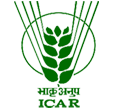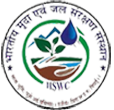- Inventory of database for land degradation and erosion hazards using remote sensing, GIS and identifying soil related constraints and land use planning
- Impact of resource conservation practices on nutrients dynamics and soil health (including carbon sequestration, microbial biomass and other physico-chemical properties, nutrient losses, enrichment ratio, soil vegetation complex)..
List of the scientific/technical/supporting Staff
| Sl. No | Name | Qualifications |
|---|---|---|
Scientific staff |
||
| 1. | Dr. D. V. Singh, Acting Head | Ph.D. (Soil Science) |
| 2. | Dr. M. Sankar Senior Scientist | Ph.D. (Soil Science) |
| 3. | Dr. Raman Jeet Singh, Senior Scientist | Ph.D. (Agronomy) |
| 4. | Dr. Trisha Roy, Scientist (Sr. Scale) | Ph.D. (Soil Science) |
| 5. | Dr. Devideen Yadav, Scientist (Sr. Scale) | Ph.D. (Agronomy) |
Technical staff |
||
| 1. | Mrs. Sarita Gupta, ACTO | M.Sc. (Chemistry) |
| 2. | Mr. Deepak Kaul, TO | Intermediate |
| 3. | Dr. Hannah Pamei, TA | Ph.D. (Forestry) |
| 4. | Dr. Bidya Chanu, TA | Ph.D. (Forestry) |
| 5. | Mr. Mudit Mishra, TA | M.Sc. Ag. (Horticulture) |
| 6. | Mrs. Varsha Gupta, Technician | B. Sc (PCM) & MCA |
| 7. | Mrs. Priyanka, Technician | Diploma |
| 8. | Mr. Surender Sharma, Technician | Intermediated (Agriculture) |
Supporting Staff |
||
| 1. | Mr. Ajit Rana, SSS | |
| 2. | Mrs. Madhu, SSS | |
| Sl. No. | Res. Prog. No. | Title of the experiment | Leader and Associates |
|---|---|---|---|
Theme P-1 Water erosion Appraisal in different Agro-ecological Regions |
|||
| 1 | P1.1 | Soil Erosion Estimation based on Radio Tracer Technique and Soil Quality Assessment in Mountainous Landscape of North-West Himalaya. | M. Sankar, Deepak Singh & Suresh Kumar |
| 2 | P1.3 | Assessment of soil carbon in transit under erosion processes: A source or sink for atmospheric CO2 | M. Sankar, Lekh Chand, & Suresh Kumar |
| 3 | P1.3 | Erosion productivity relationships for evaluating vulnerability and resiliency of soils under different agro-climatic regions of India (Core project) | Trisha Roy et al. |
| 4 | P1.3 | Carbon sequestration potential of prevailing and recommended land uses in reclaimed degraded ecosystems under different agro-ecological regions of India (Core Project) | Gopal Kumar et al. |
Theme P-2 Conservation Measures for Sustainable Production Systems |
|||
| 5 | P2.1 | To study impact of foliar nano N application on soil C:N ratio and C mineralization and its effectiveness on crop productivity (Externally Funded by DST) | Trisha Roy Uday Mandal Rama Pal |
| 6 | P2.1 | Development of conservation agriculture practices for rainfed production systems in North-Western Himalayan region | Raman Jeet Singh Trisha Roy Uday Mandal Rama Pal |
| 7 | P2.1 | Evaluation of maize based inter-cropping system to conserve soil and water and improve farm income in rainfed areas of North-Western Himalaya | Devideen Yadav D.V. Singh Deepak Singh |
| 8 | P2.1 | National Mission on Sustainable Himalayan Ecosystem Project (2nd Phase): Agriculture Inter-Institutional collaborative project. | Gopal Kumar M. Madhu Uday Mandal Ramanjeet Singh Rajesh Kaushal |
| 9 | P2.2 | Improvisation of soil working techniques for enhancing tree establishment under rainfed conditions of North-Western Himalayas | D.V. Singh J.Jayaprakash D.M. Kadam Vibha Singhal |
| 10 | P2.2 | Developing vegetation-based technology for dust and erosion control along the National Highways | Gopal Kumar Rajesh Kaushal Uday Mandal Gulshan Sharma Devideen Yadav |
Theme P-6 Human Resource Development and Technology Transfer |
|||
| 11 | P6.2 | Demonstration of Agriculture Drone technology in different region of India under Agri-Drone Project | M. Sankar et al. |
Products/Process/Technologies Developed By The Division
A. Maize+Cowpea Intercropping for Resource Conservation and Higher Productivity
Maize yield varied from 2500-3000 kg ha-1 in addition to cowpea green pod yield of 200-300 kg ha-1 under rainfed condition. Higher net returns of Rs. 9,370 ha-1 can be obtained by adopting maize + cowpea intercropping technology as compared to Rs. 8000 ha-1 with pure maize. Maize (55,000 plant ha-1) with cowpea as an intercrop maintains thick canopy cover (upto 81%) at 50 days after sowing as compared to 59% in 70 days in sole crop maize. Higher vegetative cover is effective in controlling and reducing runoff by 10 Per cent and soil loss by 28 per cent over pure maize.
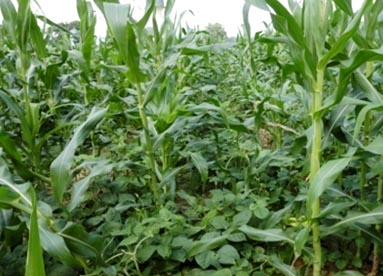
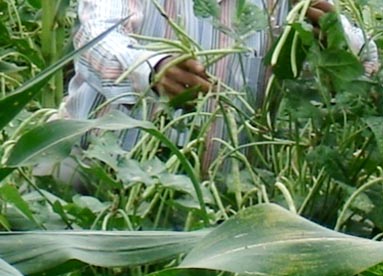
B. In -Situ Sunnhemp Green Manure Mulching In Rainfed Maize Based Cropping System For Higher Productivity
Execution of in-situ green manuring with sunnhemp produces 2180 to 2310 kg ha-1 of maize grain and 1840 to 2310 kg ha-1 of wheat grain (maize-wheat rotation) resulting in higher net profit. Sunnhemp mulching improves soil organic C along with addition of 21.6 to 41.3 kg of N ha-1 in the soil. Green manuring protects the soil from direct beating action of raindrops and increases the time of concentration by reducing the velocity of runoff water.
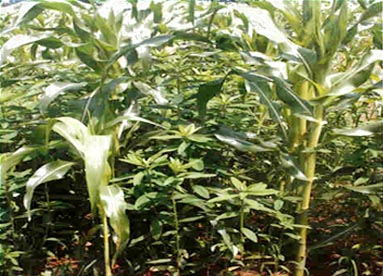
Standing stage of sunnhemp between maize rows
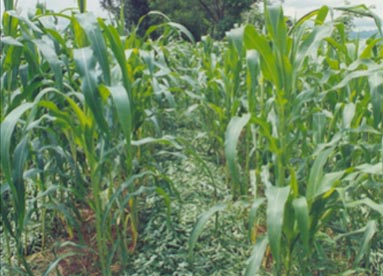
Sunnhemp mulched in between maize rows
C. Vegetative Barriers for Erosion Control in Western Himalayan Region
Vegetative barriers hinder the flow of runoff water to reduce its velocity. Silt carried along with runoff gets deposited behind this barrier. Sediment deposition results in the formation of bench terraces over a period of 3-4 years. In general, vegetative barriers can reduce runoff and soil loss by 18-21 per cent and 23-68 per cent respectively, on slopes varying from 2-8 per cent.

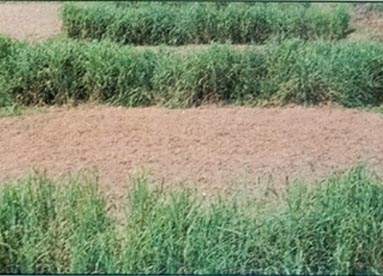
D. Conservation Tillage for Management of Natural Resources and Maximizing Productivity in Maize-Toria Cropping System
Minimum tillage + crop residue incorporation technology or mulching is more productive and beneficial which yields 2568 kg ha-1 of maize grain and 707 kg ha-1 toria seeds which is 8 per cent and 9 per cent higher, respectively as compared to conventional tillage.
Conservation tillage technology reduces loss of soil, water and nutrient by controlling soil erosion. It results in improved soil organic matter (SOM) which positively influences physical, chemical and biological properties of soil and sustained crop production. Conservation tillage technology assumes greater importance because of its ability to improve soil structure and fertility leading to sustained crop production.
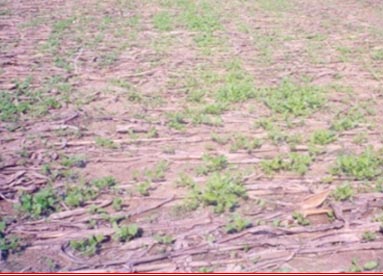
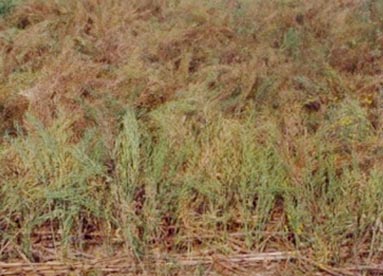
E. Aromatic Grass Based Conservation Farming For Erosion Control And Maize-Wheat Productivity In Western Himalayan Region
An aromatic grass integrated with conservation farming technology, namely Palmarosa Based Conservation Farming was developed with palmarosa as vegetative barrier along with application of minimum tillage, weed live mulch and manures for maize followed by wheat cultivated on residual fertility: FYM (5 t ha-1) + vermi-compost (1.0 t ha-1) + poultry manure (2.5 t ha-1) + minimum tillage (MT) + 3 weed mulch (20, 40 and 60 days after sowing) + palmarosa (Cymbopogon martini) as vegetative barrier. Palmarosa based conservation technology for the maize-wheat cropping system which produced 16 per cent higher mean wheat equivalent yield in the system. Net return from maize-wheat system with technology is 7 per cent higher than conventional inorganic farming.
The technology is particularly beneficial in increasing water productivity, checking soil degradation in respect of nutrient mining and in build up of organic matter leading to enhance productivity. System produced 30 and 34 per cent lesser mean runoff and soil loss, respectively than the conventional system. The mean soil moisture storage was also higher at grain filling stage of maize (7%) and wheat (27%).
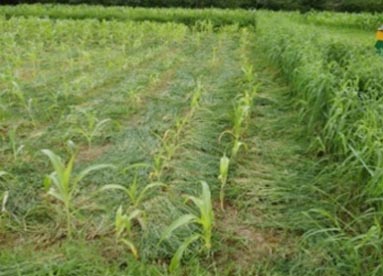
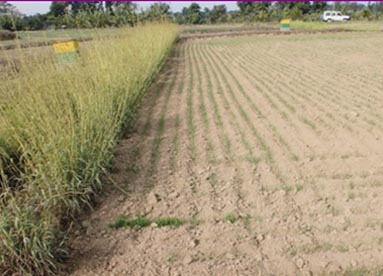
Infrastructure and Physical Facilities in the Division
Central Laboratory
The Central Soil Laboratory at ICAR-IISWC, Dehradun is equipped with various sophisticated instruments to carry out analytical work of samples of different range. The Central Laboratory caters to the analysis of samples related to different Research Projects running in the Institute. Besides this it is also committed to provide the analytical facility to different related stake holders at reasonable rates. The list of the instruments available is as follows:
- Atomic Absorption Spectrophotometer (ContraAA300)
- Nitrogen Auto analyser (KELPLUS ULTIMA DUO MIST TS-E)
- CHNS Analyser (Elementar)
- UV/VIS Double Beam spectrophotometer (Systronics)
- Flame Photometer 128 (Systronics)
- Pressure plate apparatus
- pH meter (Elico)
- EC meter (Elico)
- Muffle furnace (Therotech)
- BOD Incubator
- Multi Nutrient Analyser
- Licor CO2 analyser (For C mineralization estimation in field)
- Hot Plate
- Water Bath
The Soil Biology Laboratory
It is equipped with Laminar Air flow, Autolave, BOD Incubator, Glass Dessicator along with suction pump has been set up to analyse several soil biological properties.
Field Laboratory at Research Farm, Selaqui
The field Laboratory at Research Farm Selaqui is equipped fecilities which are used for pre-processing of soil, plant and water samples and analysis of some physical properties.
- Grinder mill
- Hot air oven
- Water-bath
- Hot plate
- pH meter
- EC meter
- Leaf area meter
- Root length scanner
- Yoder’s Apparatus
- Hydraulic conductivity set
- Infiltrometer
- Core sampler
- Soil sampling Auger

